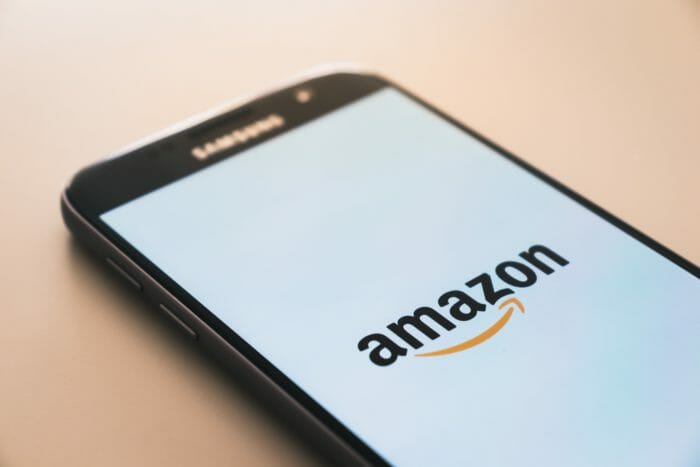Amazon’s omnipresence: in your phone, on your laptop, in the food you eat . . . and we might be acting too late. (Unsplash, CC0)
Amazon first announced its initiative for a new headquarters, labelled “HQ2,” back in September, 2017. With this pronouncement came a torrent of a proposals that represented various cities and states, all offering land for the development of a new workplace. By January, Amazon had whittled its list of 238 down to just 20 locations-Columbus, Ohio, being one of the online retailer’s remaining options.
Fortunately for Columbus, Amazon opted to split its 50,000-worker office between Long Island City, New York, and Crystal City, Virginia.
Amazon’s passing on Columbus’ offering is a blessing, for it has become painstakingly obvious when one considers the economic problems that manifest themselves in New York and Virginia.
On the surface, it looks as if the Long Island City branch created 25,000 jobs for the unemployed and impoverished in New York, but reality affirms that the construction of this $5 billion project is taking jobs away from small, local businesses. Where 1,500 units of affordable housing would have stood, now stands the foundation for a company that’s leeching the economic capabilities out of Queens, New York.
While Amazon reaps the tax breaks that New York places at its feet, vital infrastructure, like the New York City Subway, public-schools, and health-care, deteriorate. The price of housing in the area skyrockets, contributing to homelessness in an already demanding housing industry.
New York Senator Michael Gianaris said, “the more we learn about this deal, the worse it gets.”
Gianaris couldn’t be more right. The world is binded to a “deal” with Amazon that we can’t back out of: simply too many people rely on its services, and only now are we prodding at the clandestine agreements we’ve made with the retail behemoth and uncovering just how much Amazon keeps behind closed doors.
In fact, the announcement of HQ2 went practically unnoticed by the masses because other, more compelling news came up: worker’s rights–or the lack thereof–in Amazon’s workplaces.
James Bloodworth, a writer who worked as an order picker for Amazon in the United Kingdom, discovered the dreadful conditions that the rest of the world doesn’t get to see. The warehouse was compared to a prison: workers served gruelling hours and were forced to perform at their limits–walking up and down a warehouse ten soccer fields long for ten or more hours a day–just to get paid minimum wage.
Managers chastised those who spent “idle time,” which included time spent talking to co-workers or using the restrooms. Being caught not meeting a productivity quota or arriving late to a shift on too many occasions resulted in workers getting fired. In an environment where
“decency, respect and dignity were absent,” Bloodworth even found a Coca-Cola bottle with urine in it-the consequence of regulations that discourage basic human rights like using the restroom.
Workers would leave the facility within sight of a “cardboard cut-out of an Amazon worker [that] proclaimed, via a speech bubble attached to her head: ‘we love coming to work and we miss it when we’re not here’.”
There’s no such thing as a free lunch. In Amazon’s case, however, the workers pay the price of the lunch through their sweat and blood while Amazon continues to grow.
Bloodworth’s experience should set off some alarms when one considers the numerous workers across the globe that help shipments get to their destinations. A shallow dive on the Internet reveals the myriad of workers that have spoken out about the inhumane and hazardous conditions in the workplace. Just this week, another report came out, stating that a flaw in Amazon’s machinery sprayed bear repellent throughout the warehouse, hospitalizing 24 employees.
Society as a whole is knee-deep in Amazon’s ubiquitous framework. Only it’s getting increasingly more difficult to pull ourselves out of Amazon’s grasp because of how much we depend on it for our daily needs.
Furthermore, Amazon has the power to purchase small companies or simply out-sell them, which is why it has been relentless in its race to the title of #1 retailer. The tech giant recently bought out Whole Foods and has been infamous for stomping out smaller, competitive companies by lowering prices to gain a semi-monopolistic advantage over any market.
Regardless, Amazon isn’t stopping anytime soon. Although the administration received a lot of flak in recent months, whether it was over video monitoring or the aforementioned HQ2 and workers’ rights, it’s still gaining ground on other retail titans, like Walmart and CostCo.
To combat the problems in Amazon’s workplace, we need to act now, lest we start to act when it’s too late-when we’re not just knee-deep in Amazon’s authority, but drowning as well.








